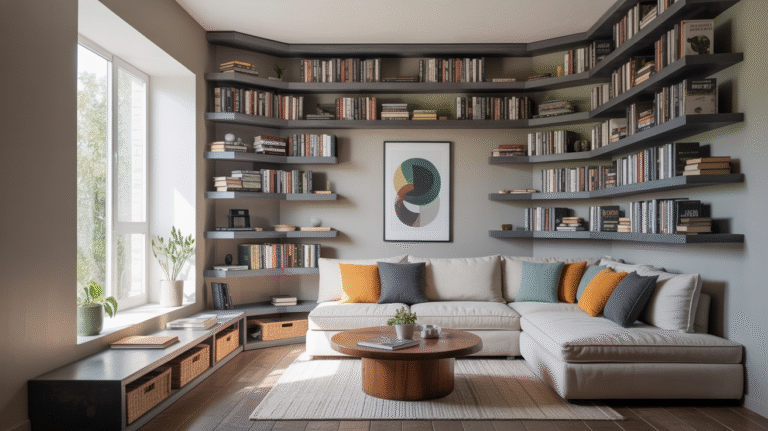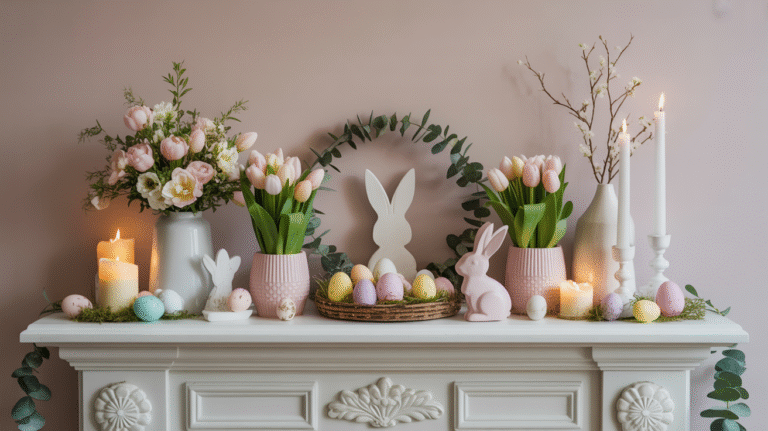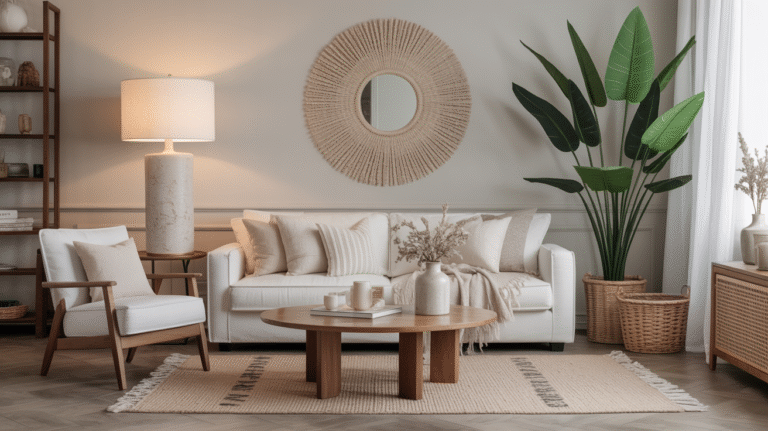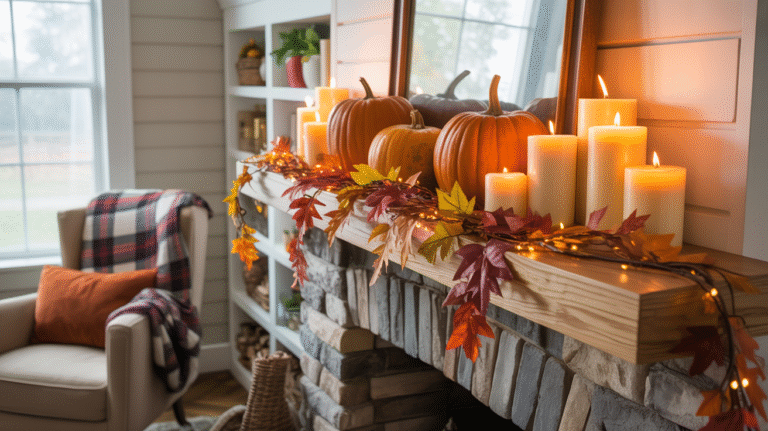The Secret to Making Minimalist Decor Feel Warm, Not Sterile
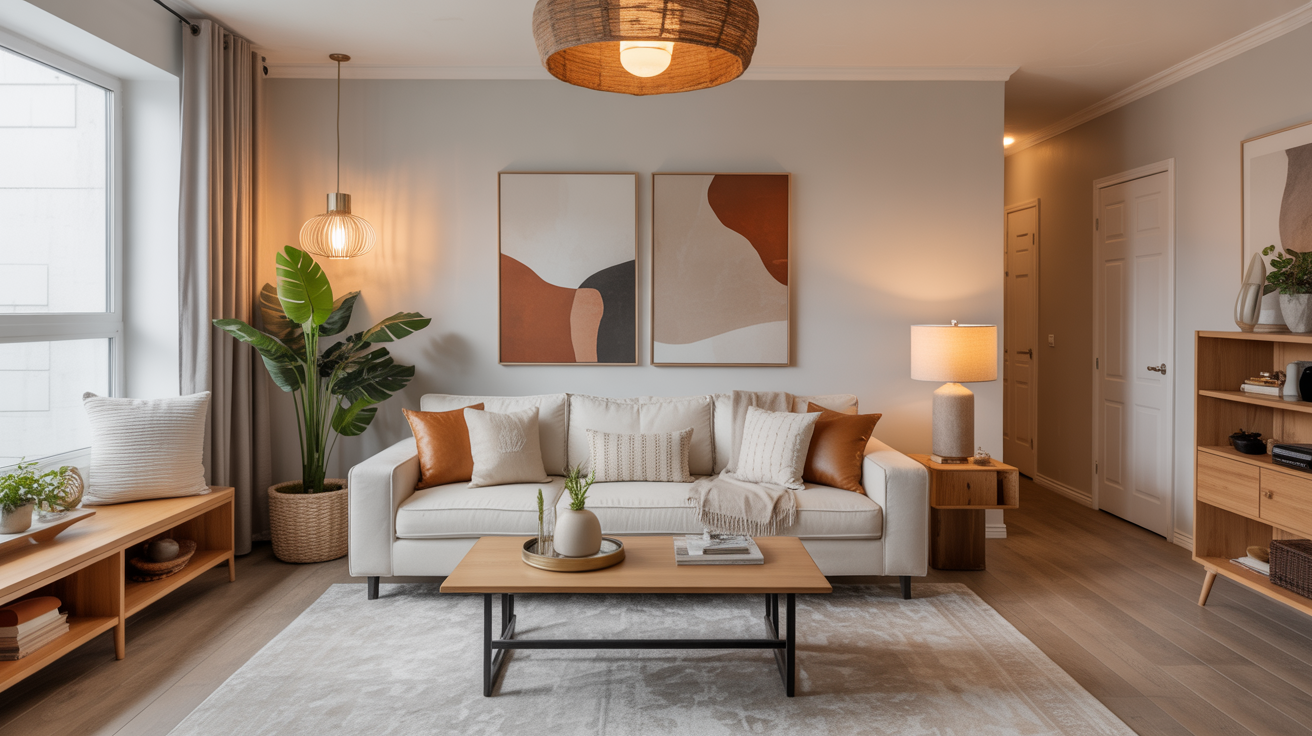
Minimalist decor often faces criticism for being cold, sterile, or unwelcoming. It’s common for people to assume that minimalism means sacrificing warmth and comfort. The truth is, you can achieve a minimalist aesthetic while maintaining warmth and coziness in your space—it’s all about thoughtful design choices.
When I first embraced minimalist decor in my home, I found myself struggling with a space that felt more like a showroom than a place to live. However, I quickly discovered that creating warmth within minimalism lies in the details: selecting the right pieces, using natural materials, and creating a balance between empty space and functional design. In this article, we’ll explore the secret to making minimalist decor feel warm while avoiding a sterile, lifeless environment.
The Secret to Making Minimalist Decor Feel Warm
Minimalist decor doesn’t have to feel cold or empty; it’s all about layering warmth through careful selection of textures, colors, and furniture pieces. Here’s how you can achieve the perfect blend of minimalist and cozy:
1. Embrace Natural Materials
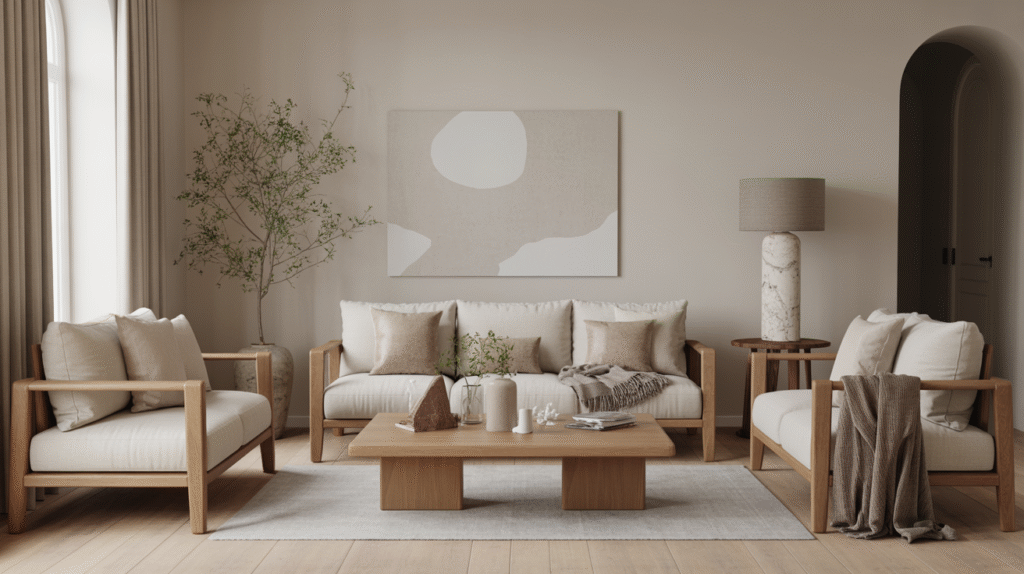
One of the simplest ways to bring warmth to minimalist spaces is by using natural materials. Wood, stone, wool, and linen are perfect for creating a tactile, welcoming environment. These materials add texture and character without disrupting the clean, simple lines that define minimalism.
- Wood: Light oak, walnut, or even reclaimed wood instantly add warmth to a room.
- Wool and Linen: Soft wool blankets or linen cushions create comfort while maintaining a clean aesthetic.
- Stone and Clay: Small touches of marble or clay elements can add texture and warmth without overwhelming the simplicity of the room.
Incorporating these materials into your space will make it feel grounded and inviting, instead of cold and stark.
2. Incorporate Soft Textiles
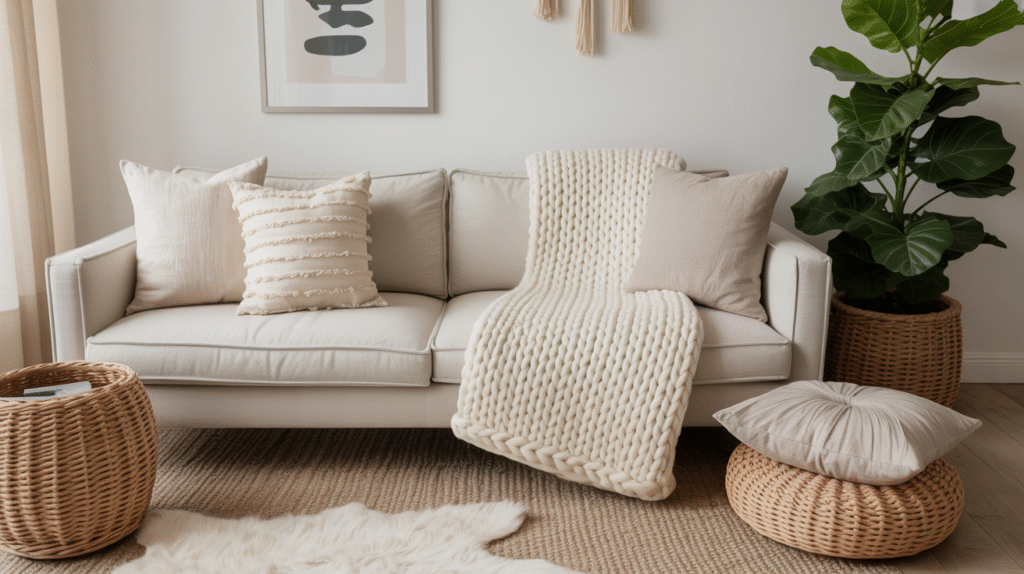
Textiles like throws, cushions, and rugs can soften minimalist spaces, making them feel more comfortable and cozy. Instead of using too many decorative pieces, focus on adding a few high-quality textiles to your design. A chunky knit throw or a luxurious wool rug can make a big difference.
- Layering Textiles: Layering different textures like a wool rug over a wooden floor or a velvet throw on a leather sofa creates a sense of warmth without cluttering the space.
- Quality over Quantity: It’s not about adding tons of pillows or blankets, but carefully selecting items that contribute to both comfort and design.
By adding the right textiles, you can easily transform minimalist decor from cold to cozy.
3. Use a Warm Color Palette
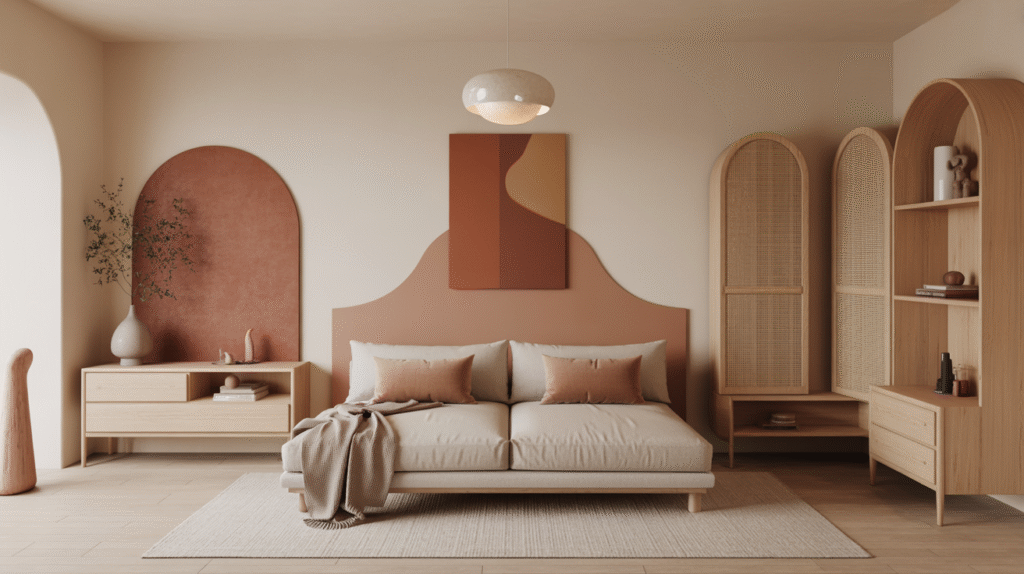
While minimalist spaces often rely on neutral tones, adding a warm color palette can instantly make the room feel more inviting. Instead of sticking to pure whites or grays, introduce warm undertones like soft beige, muted terracotta, or warm taupes.
- Neutral Tones: Start with warm white or cream for your walls and larger furniture pieces.
- Accent Colors: Incorporate earthy tones like rust, mustard, or deep green for your textiles and decor. These colors add warmth without overpowering the minimalist look.
- Wood Tones: Natural wood accents, from furniture to flooring, create an inviting contrast against the cooler elements of modern minimalism.
A warm, neutral color palette gives your space a timeless quality while maintaining the simplicity of the minimalist style.
4. Maximize Natural Light
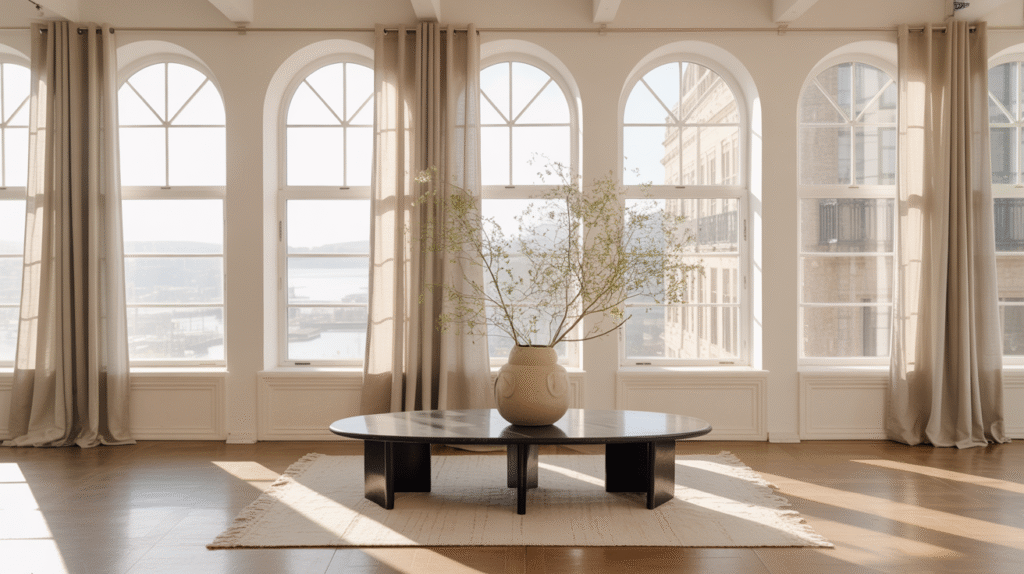
Natural light is crucial for making any space feel warm and welcoming. Minimalist designs often work best with large windows or open spaces that let in as much light as possible. Keeping your windows unobstructed and using sheer curtains can create a brighter, airier space.
- Open Space: If possible, avoid heavy drapery and opt for lightweight materials like linen or cotton that allow natural light to filter through.
- Reflective Surfaces: Mirrors and glass elements reflect light around the room, making the space feel larger and more vibrant.
Using natural light to highlight the textures and colors in your minimalist space will create a much warmer environment.
5. Create a Cozy Layout
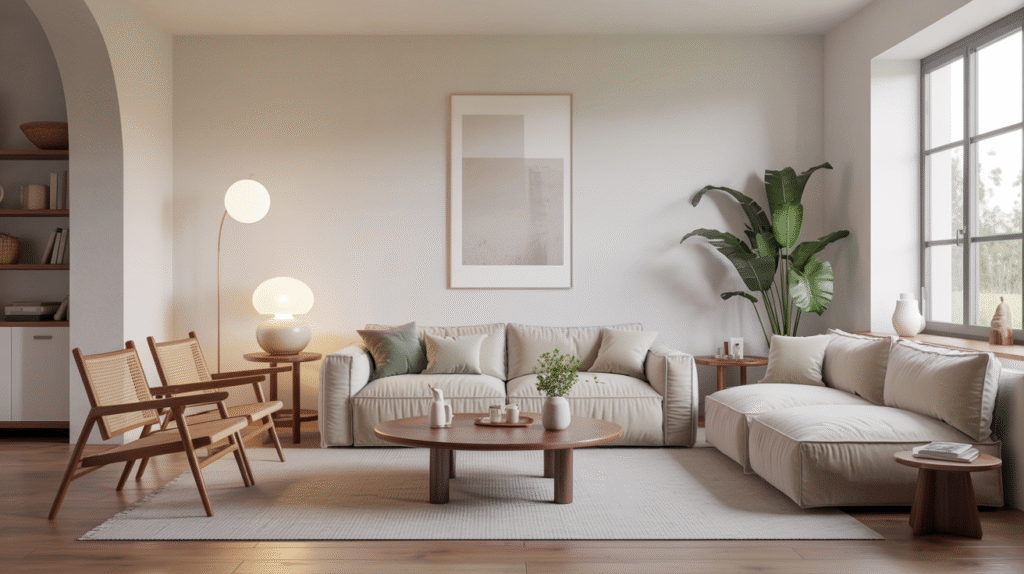
The layout of your furniture plays a big role in making your space feel warm. Avoid overcrowding the room with unnecessary pieces and instead focus on creating an open layout that allows movement and flow. Space itself is an important design element in minimalism, as it allows the eye and mind to rest.
- Breathing Room: Leave plenty of space between furniture to avoid a cluttered or cramped feeling. This creates a calm environment where each piece can be appreciated.
- Movement Paths: Ensure that you can easily navigate through the space without obstacles. A clear path can make the room feel more open and welcoming.
By focusing on layout and movement, your minimalist space will feel more relaxed and inviting.
6. Add Personal Touches
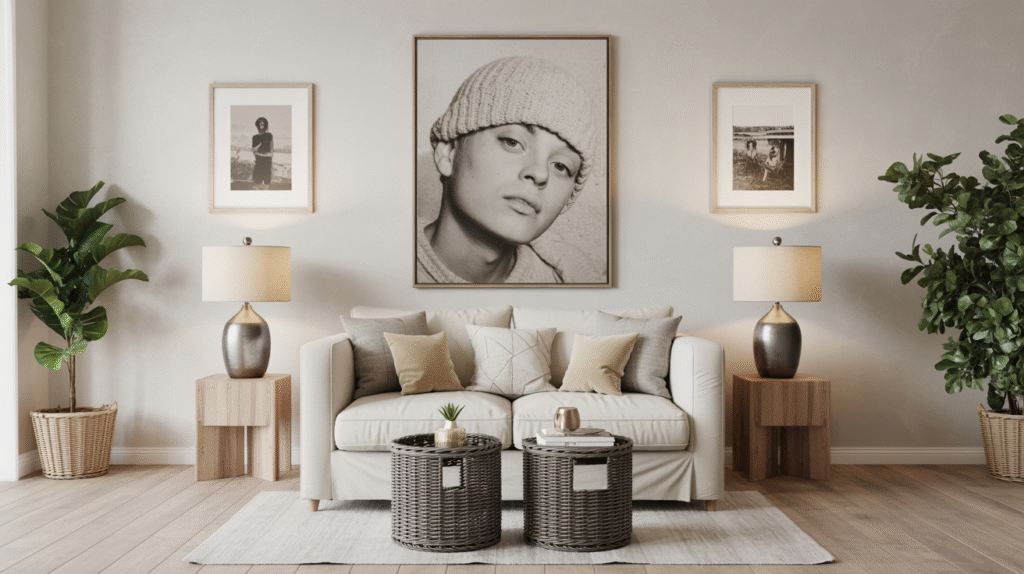
Minimalism doesn’t mean your home should feel devoid of personality. Incorporating personal touches into your decor will make your minimalist space feel truly like home. This could be a piece of art you love, a family heirloom, or even a unique find that speaks to you.
- Artwork and Photos: Add a single statement piece of artwork or a few framed photos that resonate with you. These personal items add warmth without overwhelming the room.
- Functional Decor: Choose decor items that serve a purpose, like a stylish basket for storage or a sleek table lamp with a soft glow. These items will bring warmth while still maintaining the minimalist aesthetic.
Remember, personal touches are what make a house a home, and they’ll ensure that your minimalist space feels lived-in and warm.
7. Layering Light for Warmth
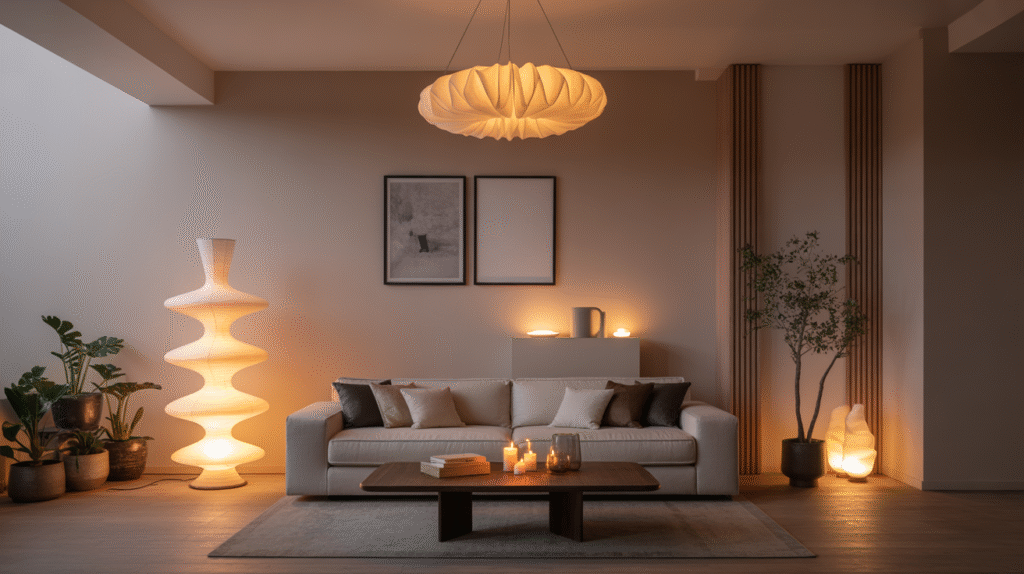
Lighting plays a significant role in making a minimalist space feel warm and inviting. Instead of relying solely on overhead lights, incorporate various light sources like lamps, sconces, and candles to create a soft, ambient glow.
- Layered Lighting: Combine ambient, task, and accent lighting to add depth and warmth to your space.
- Natural Lighting: Position furniture near windows to make the most of natural light during the day.
With layered lighting, your minimalist home can have a gentle warmth that enhances the overall cozy vibe.
Final Thought
By incorporating thoughtful design choices such as natural materials, warm colors, soft textiles, and personal touches, you can easily make minimalist decor feel warm and inviting. It’s not about filling your space with more items but rather being intentional with what you select. When done right, minimalist spaces can be both functional and cozy, offering a perfect balance between simplicity and warmth.
